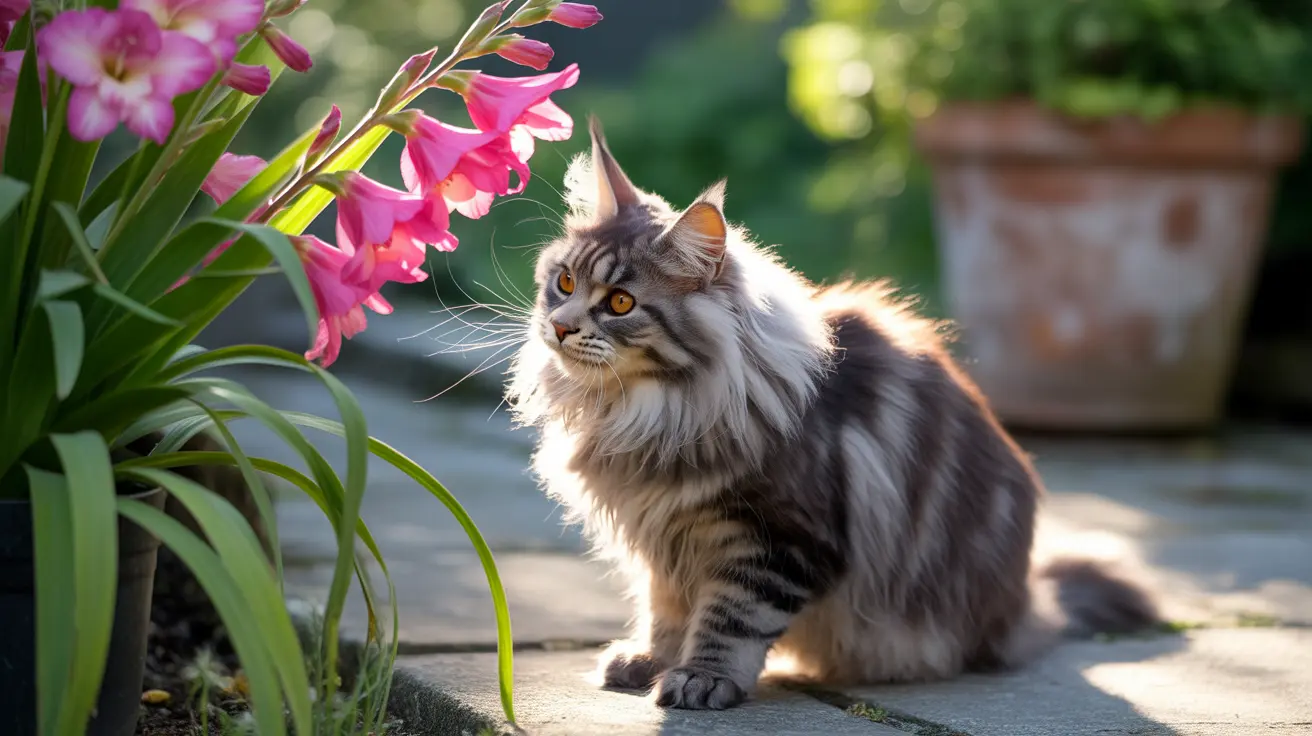If you're a cat owner who loves to decorate with flowers, you need to know about the dangers of gladiolus plants. These beautiful flowering plants can pose a serious health risk to your feline friends, with all parts of the plant being toxic to cats – especially the bulbs, known as corms.
Understanding the risks associated with gladiolus exposure and knowing how to recognize signs of poisoning could save your cat's life. Let's explore everything you need to know about gladiolus toxicity in cats, from symptoms to treatment options.
Understanding Gladiolus Toxicity in Cats
Gladiolus plants contain toxic compounds that can cause various adverse reactions in cats. While the exact toxic components haven't been fully identified by scientists, what's clear is that all parts of the plant can cause poisoning, with the bulbs containing the highest concentration of harmful substances.
Even small amounts of gladiolus can trigger symptoms in cats, though severe poisoning typically occurs when cats consume larger portions or manage to eat the bulbs.
Common Symptoms of Gladiolus Poisoning
When a cat ingests any part of a gladiolus plant, symptoms typically appear within 1-4 hours. The most common signs include:
- Excessive drooling or salivation
- Vomiting and diarrhea
- Loss of appetite
- Lethargy and depression
- Abdominal pain
- Dehydration
Severe Symptoms to Watch For
In more serious cases, particularly when cats consume gladiolus bulbs, additional symptoms may develop:
- Irregular heartbeat or cardiac issues
- Seizures or tremors
- Liver or kidney dysfunction
- Difficulty breathing
- Severe dehydration
- In extreme cases, organ failure
Immediate Actions and Treatment
If you suspect your cat has eaten any part of a gladiolus plant, immediate action is crucial. Contact your veterinarian or the ASPCA Animal Poison Control Center (888-426-4435) right away, even before symptoms appear.
The veterinary treatment plan may include:
- Induced vomiting (if caught early)
- Administration of activated charcoal
- IV fluid therapy
- Supportive care for symptoms
- Monitoring of organ function
- Medical management of complications
Prevention and Safety Measures
The best way to protect your cat from gladiolus poisoning is through prevention:
- Keep gladiolus plants out of your home and garden if you have cats
- If you receive gladiolus as a gift, place them in a completely inaccessible location
- Consider pet-safe alternatives for decorative flowers
- Educate family members and visitors about the risks
- Monitor your cat's outdoor activities if neighbors grow gladiolus
Frequently Asked Questions
Are gladiolus plants toxic to cats, and which parts are the most dangerous?
Yes, gladiolus plants are toxic to cats, with all parts being poisonous. The bulbs (corms) contain the highest concentration of toxins and are therefore the most dangerous part of the plant.
What symptoms should I watch for if my cat eats gladiolus?
Watch for drooling, vomiting, diarrhea, lethargy, abdominal pain, and loss of appetite. In severe cases, symptoms may include irregular heartbeat, seizures, and organ dysfunction.
How quickly do signs of gladiolus poisoning appear in cats after ingestion?
Symptoms typically appear within 1-4 hours after ingestion, making it crucial to seek immediate veterinary care if you suspect your cat has eaten any part of the plant.
What should I do immediately if I suspect my cat has ingested gladiolus?
Contact your veterinarian or the ASPCA Animal Poison Control Center immediately. If possible, bring a sample of the plant or any vomit to help with diagnosis and treatment.
Can gladiolus poisoning cause serious organ damage or be fatal to cats?
While most cases result in gastrointestinal symptoms that resolve with treatment, severe cases involving bulb consumption can cause serious organ damage and, in rare cases, may be fatal without prompt medical intervention.






